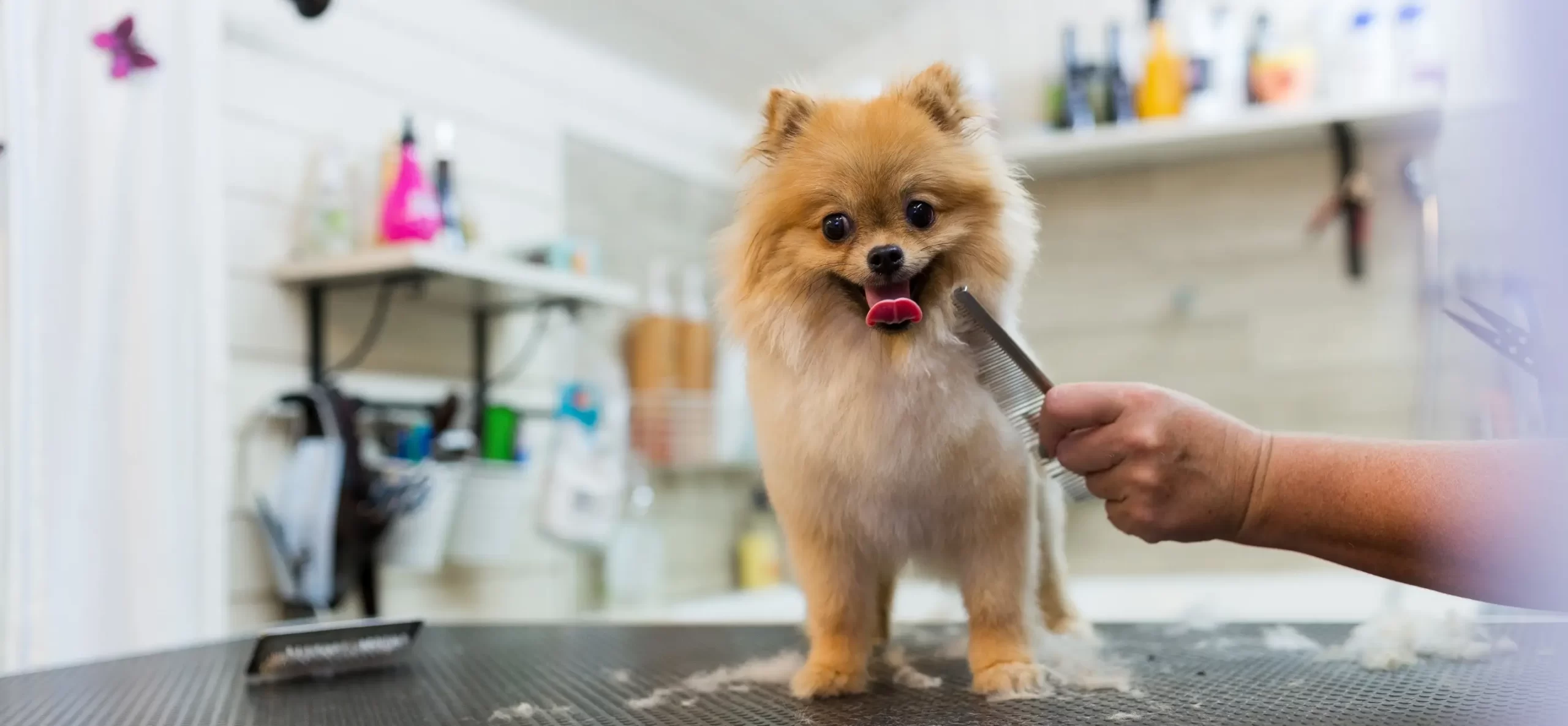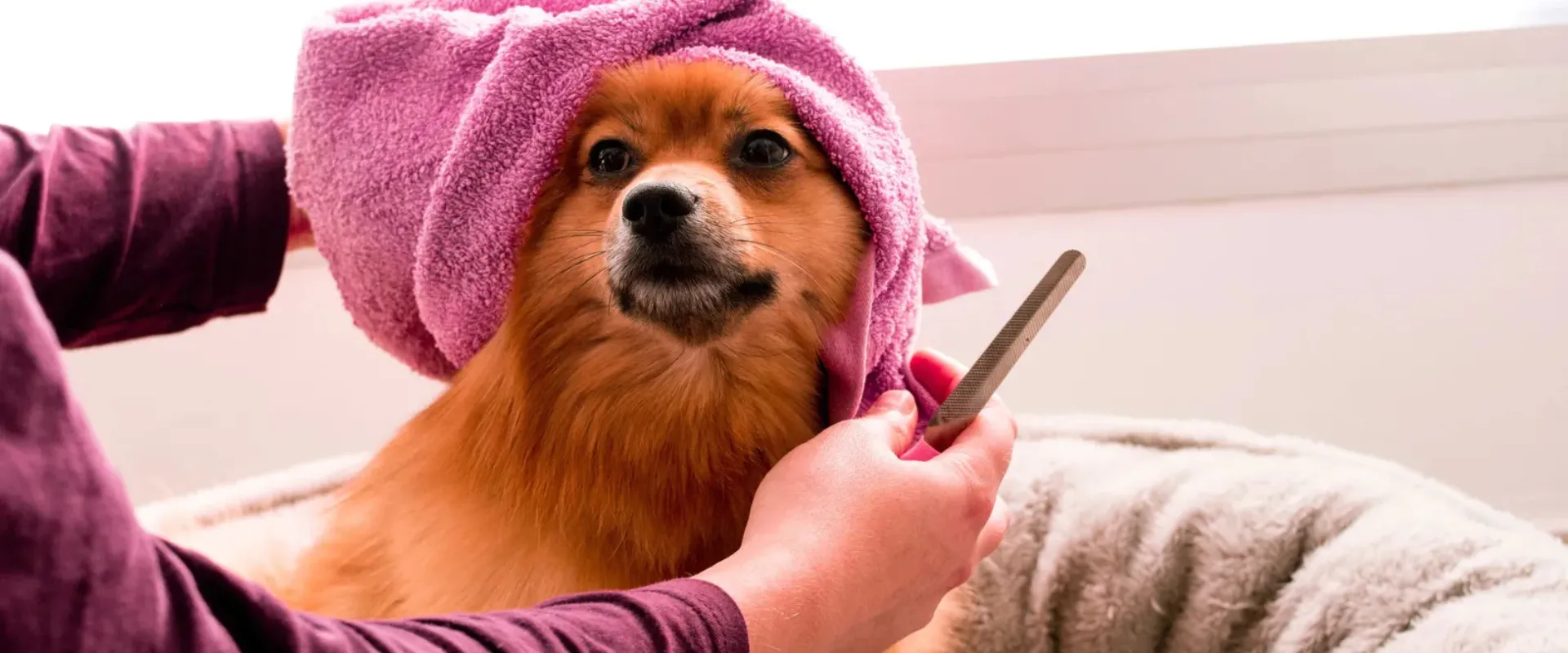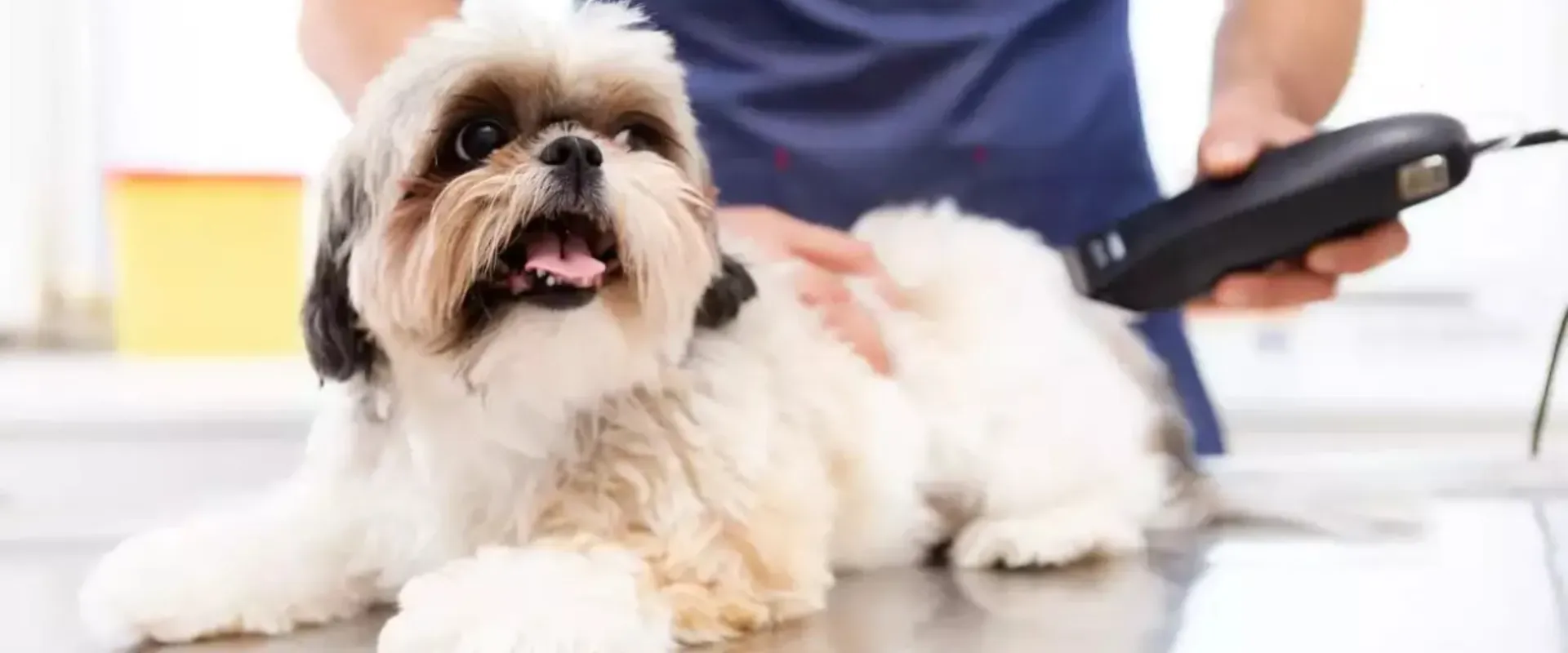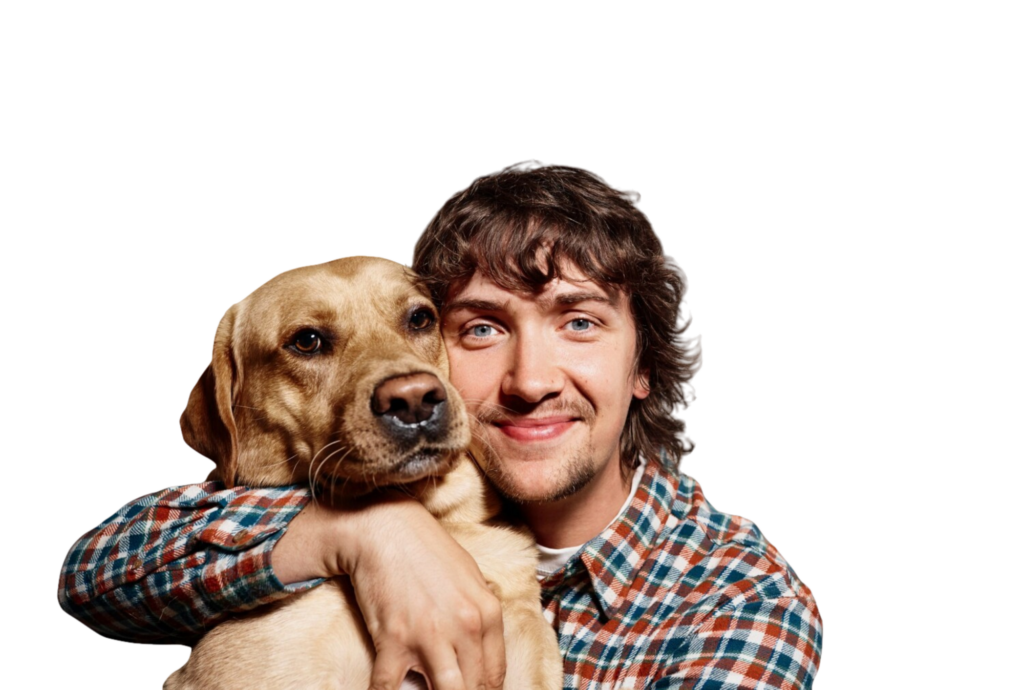Puppies bring joy, energy, and a lot of love into our lives, but they also need consistent care to stay healthy and happy. At Kontata, we understand that setting up a grooming routine for puppies starts early to ensure they grow into well-groomed, comfortable adult dogs. A solid routine not only keeps your puppy looking great but also strengthens your bond and supports their overall well-being.
This guide walks you through the steps to create an effective puppy grooming schedule, offering practical tips to make grooming stress-free and enjoyable for both you and your furry friend.
Why a Grooming Routine Matters for Puppies
Grooming isn’t just about appearances. It plays a significant role in your puppy’s health. Regular grooming helps prevent dog skin issues, matting, and discomfort while getting your puppy used to being handled. Starting early builds positive habits, making future grooming sessions easier.
A consistent routine also lets you spot health problems like lumps, ticks, or ear infections before they become serious. By prioritizing puppy care grooming, you’re investing in your puppy’s long-term comfort and dog happiness. Plus, it’s a great way to bond and show your puppy some love.
Health Benefits of Regular Grooming
Grooming keeps your puppy’s coat clean and free of dirt, reducing the risk of skin infections. Dog brushing spreads natural oils, keeping their coat shiny and healthy. It also helps you check for fleas, ticks, or unusual bumps. Cleaning ears and trimming nails prevents infections and discomfort. A puppy grooming schedule ensures these tasks happen regularly, catching minor issues before they grow.
For example, dog ear cleaning during grooming can prevent painful ear infections, which are common in floppy-eared breeds like basset hounds. 
Building Trust Through Grooming
Puppies are naturally curious but can be nervous about new experiences. Introducing grooming early helps them feel safe during handling. Start with short, positive sessions, using treats and praise to create a calm environment. Over time, your puppy will associate grooming with care and attention, making it a stress-free part of their routine. This trust is key for first puppy grooming tips, as it sets the tone for a lifetime of easy grooming.
Essential Tools for Puppy Grooming
Brushes and Combs
Choose a brush suited to your puppy’s coat type. Short-haired breeds like beagles do well with a soft bristle brush, while long-haired breeds like golden retrievers need a slicker brush to prevent matting. A fine-tooth comb works for detangling and removing debris. Regular brushing, as part of your puppy’s care and grooming, keeps the coat healthy and reduces shedding around your home.
Shampoos and Conditioners
Use a gentle, puppy-safe shampoo to avoid irritating their sensitive skin. Look for products free of harsh chemicals, ideally with natural ingredients like oatmeal or aloe vera. A conditioner can help with detangling curly-haired dogs. Avoid human shampoos, as they can disrupt your puppy’s skin pH and cause dryness.
Nail Clippers and Other Essentials
Puppy nail clippers, a styptic powder (to stop bleeding if you cut too close), and cotton balls for ear cleaning are must-haves. A toothbrush designed for dogs, along with pet-safe toothpaste, will keep their teeth clean. These tools make the first puppy grooming tips easier to follow, ensuring you cover all bases without overwhelming your puppy.
Step-by-Step Guide to a Puppy Grooming Routine
Step 1: Brushing Your Puppy
Brush your puppy two to three times a week to keep their coat healthy and free of tangles. Start with five-minute sessions, using a gentle brush suited to their coat type. Focus on areas prone to matted dog hair, like behind the ears or under the legs. Use treats to keep them calm. Regular brushing, a core part of any puppy grooming schedule, also helps you check for skin issues or parasites. For curly-haired dogs like poodle mixes, daily dog brushing can prevent painful matting.
Step 2: Bathing Your Puppy
Bathe your puppy every two to four weeks, depending on their activity level and coat type. Use lukewarm water and a puppy-safe shampoo. Wet their coat thoroughly, lather gently, and rinse well to avoid residue. Dry them with a towel or a low-heat blow dryer to prevent chills. Dog bathing is a key part of puppy care and grooming, keeping their skin clean and their coat soft.
Step 3: Nail Trimming
Trim your puppy’s nails every three to four weeks to prevent overgrowth, which can cause discomfort or affect their gait. Use puppy-sized clippers and cut just above the quick (the pink area in the nail). If you’re nervous about trimming, start by handling their paws daily to get them used to the process. This step is crucial for a complete grooming routine for puppies and prevents scratches during playtime.
Step 4: Ear Cleaning
Check and clean your puppy’s ears weekly to prevent infections, especially in breeds with floppy ears. Use a vet-recommended ear cleaner and a cotton ball to gently wipe the outer ear. Avoid going too deep into the ear canal. Regular professional ear cleaning, a key part of first puppy grooming tips, keeps your puppy comfortable and healthy.
Step 5: Teeth Brushing
Brush your puppy’s teeth two to three times a week with a dog-specific toothbrush and toothpaste. Start by letting them taste the toothpaste, then gently brush in circular motions. This prevents plaque buildup and promotes good oral health, an often-overlooked part of a puppy grooming schedule. Consider teeth cleaning for deeper care.

How Often Should You Groom Your Puppy?
The dog grooming depends on your puppy’s breed, coat type, and lifestyle. Short-haired breeds may need brushing once or twice a week, while long-haired or curly-coated breeds require daily attention to prevent matting. Bathing every two to four weeks is usually enough, but active puppies who love mud might need more frequent baths. Dog nail trimming and ear cleaning should happen every three to four weeks, while teeth cleaning is ideal two to three times a week. A consistent grooming routine for puppies keeps these tasks manageable and effective.
Common Puppy Grooming Mistakes to Avoid
Over-Bathing
Bathing too often can strip your puppy’s skin of natural oils, causing dryness or irritation. Stick to a schedule of every two to four weeks unless they’re visibly dirty. Use gentle, puppy-safe products to protect their skin, a key tip in first puppy grooming tips.
Ignoring Anxiety Signs
Puppies may feel nervous during grooming. Watch for signs like trembling, whining, or hiding, and pause if they seem stressed. Use treats, a calm voice, and short sessions to build their confidence. A stress-free grooming approach is essential for a successful puppy grooming schedule.
Cutting Nails Too Short
Trimming nails too close to the quick can cause pain and bleeding. If you’re unsure, trim small amounts at a time or consult a professional groomer. This prevents negative experiences that could make your puppy wary of grooming, especially for nervous dog grooming.
Tips for Making Grooming Fun for Your Puppy
Use Positive Reinforcement
Reward your puppy with treats, praise, or playtime during and after grooming. This builds a positive association with the process. Positive reinforcement training works wonders here.
Start Slow and Be Patient
Introduce grooming gradually, starting with short sessions. Handle their paws, ears, and body gently to build trust. Patience is key, especially when following first puppy grooming tips for the first time.
Create a Calm Environment
Groom in a quiet, comfortable space with minimal distractions. Play soft music or use a familiar blanket to help your puppy relax. A calm setting supports a successful grooming routine for puppies and reduces dog anxiety during grooming.

Get Started with Kontota
Creating a grooming routine for puppies sets your furry friend up for a lifetime of health and happiness. By starting early, using the right tools, and keeping sessions positive, you’ll build a routine that works for both of you. For extra support, Kontata offers mobile dog grooming services tailored to your puppy’s needs.
Get a Customized Quote today or contact us for more info. If needed, reach out to VetCare 24/7 for health advice.
FAQs
At what age should I start grooming my puppy?
Start grooming as early as 8 to 12 weeks, beginning with short, gentle sessions. Early grooming helps your puppy get used to the process. This aligns with puppy grooming age recommendations.
How often should I bathe my puppy?
Bathe your puppy every two to four weeks, depending on their coat and activity level. Use a gentle shampoo to protect their skin, a key part of puppy care grooming.
What if my puppy is scared of grooming?
Introduce grooming slowly, using treats and a calm environment. If anxiety persists, professional groomers like those at Kontota can help with puppy grooming services.



